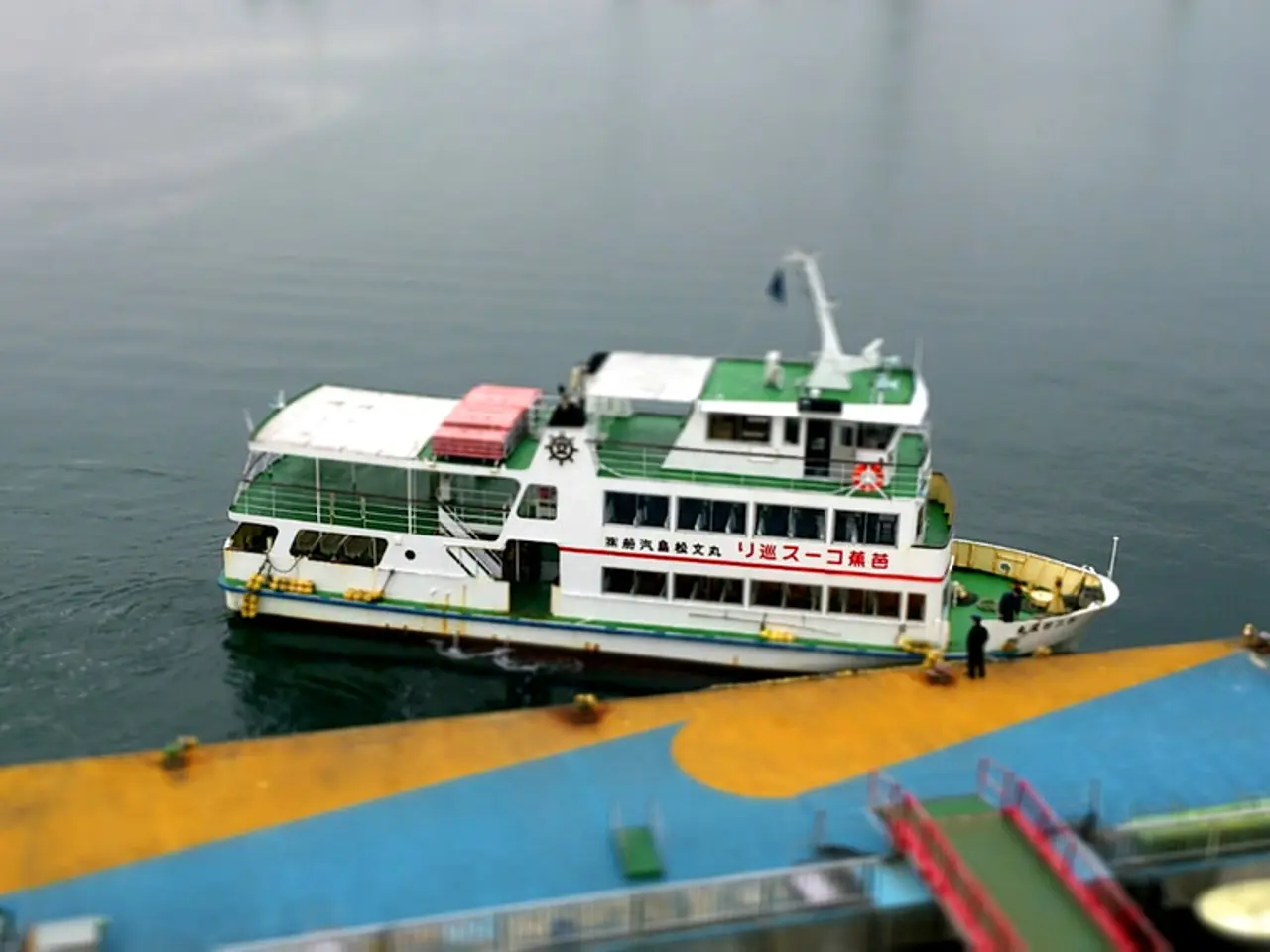Enhancing Hydrologic Support Services in Mauritius
The Mauritius Hydrographic Service, a key player in the nation's maritime sector, is focusing on expanding its seabed mapping capabilities to support the government's vision of an ocean-based economy. This strategic shift was highlighted during a recent seminar held on World Hydrography Day in August 2025.
As an island nation with a vast Exclusive Economic Zone (EEZ) of approximately 2.3 million square kilometres, the importance of accurate hydrographic data for sea-borne trade, environmental protection, and resource management cannot be overstated. The Mauritius Hydrographic Service, previously known as the Mauritius Hydrographic Unit, has been at the forefront of providing hydrographic services to various national organizations, including the Continental Shelf, Maritime Zones Administration & Exploration Division - Prime Minister's Office, Shipping Division, Mauritius Ports Authority, National Coast Guard, Department of Fisheries, and more.
The Service operates an Inshore Survey Vessel named "Pathfinder", supplied by the Government of India in 2013, and has procured and operationalized advanced hydrographic equipment such as VHF Radio, Emergency Position Indicating Radio Beacon, Current meter, Sound Velocity Probe, Seabed Grab, Tide gauge, Office infrastructure, and Portable Echo-Sounder Hydrotrac-II.
In line with its commitment to regional leadership, the Mauritius Hydrographic Service has strengthened its cooperation with hydrographic organisations such as the International Hydrographic Organization, South African Islands Hydrographic Commission, and North Indian Ocean Hydrographic Commission. This collaboration has enabled the Service to meet its cartographic and hydrographic training requirements.
The Service has also made significant strides in interfacing GIS data sets for enhancing scientific research and inundation modelling. Bathymetric data surrounding Mauritius, Rodrigues, and Agalega has been provided to establish the model for the storm surge early warning system, significantly enhancing disaster management capabilities.
The Service has initiated the survey of 78 passes around Mauritius to address multilateral requirements for navigable passes in the lagoons, with 28 passes surveyed to date. A detailed survey was carried out for three newly formed islets north of Port Louis harbour, and the detailed coordinates for the islands were forwarded for updating of national records.
The Mauritius Hydrographic Service has been recognised at the international level, receiving the Certificate of Distinction as a finalist during the International Innovation Awards conducted by the Commonwealth Association for Public Administration and Management (CAPAM) in 2018.
Looking ahead, the Service aims to strengthen its regional leadership in hydrography, positioning Mauritius as a hub for ocean data and seabed mapping in the region. Enhancing seabed mapping capabilities is crucial for sustainable management of marine resources, offshore exploration, and maritime safety. This strategic focus aligns with the broader national vision to grow the ocean economy sustainably.
The seminar also reflected a commitment to inclusive growth in maritime sectors, coinciding with the International Day for Women in Maritime. The Mauritius Hydrographic Service has conducted formal training and On Job Training for land surveyors, surveyors, officers from various organizations, and other personnel, emphasising its dedication to capacity building and knowledge sharing.
The Service's future plans also include developing deep sea surveying capability, transitioning to GIS-based processing and data compilation tools, establishing maintenance and support procedures for specialized equipment, providing a legal framework for hydrographic services, and procuring advanced hydrographic equipment.
In conclusion, the Mauritius Hydrographic Service's current developments revolve around seabed mapping expansion and regional collaboration, aligning with the broader national vision to grow the ocean economy sustainably. These efforts will provide critical data that facilitates exploration and sustainable exploitation of marine resources, maritime transport, and environmental protection.
[1] Mauritius Times [3] Mauritius Broadcasting Corporation [5] L'Express
- The Mauritius Hydrographic Service, a key player in the nation's maritime sector, is emphasizing the expansion of seabed mapping capabilities to support the government's vision of an ocean-based economy.
- By focusing on hydrographic survey, the Service seeks to strengthen its role in setting maritime boundaries, ensuring the safety of navigation, and supporting industry, environmental-science, finance, lifestyle, investing, business, technology, education-and-self-development, and general-news within the coastal zone management.
- With an ambitious goal to become a hub for ocean data and seabed mapping in the region, the Service is actively collaborating with hydrographic organizations such as the International Hydrographic Organization, South African Islands Hydrographic Commission, and North Indian Ocean Hydrographic Commission.
- By improving scientific research through the incorporation of GIS data sets, the Service has contributed to inundation modeling, disaster management, and sports, such as fishing and water sports, by establishing storm surge early warning systems.
- To meet increasing demands for navigable passes in the lagoons, the Service has initiated the survey of 78 passes around Mauritius, with 28 passes surveyed so far.
- In line with international best practices, the Mauritius Hydrographic Service has been recognized for its exceptional work, receiving the Certificate of Distinction as a finalist in the International Innovation Awards conducted by the Commonwealth Association for Public Administration and Management (CAPAM) in 2018.
- As part of its future plans, the Service intends to develop deep sea surveying capability, transition to GIS-based processing and data compilation tools, establish maintenance and support procedures for specialized equipment, provide a legal framework for hydrographic services, and procure advanced hydrographic equipment.




